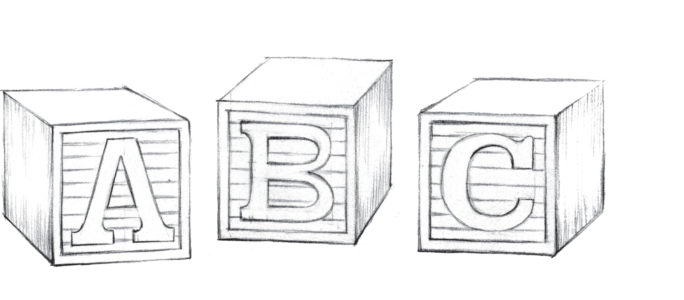
Our choices for responding to our environment depends on the relationship between our body map and the environment. The body map is how the brain sees what movements are available to solve the movement equation. How we create integrated movement is by assembling the available building blocks to which we have access via the body map.
Integration starts with individual building blocks. To develop a complete body map, we need to disassemble movement into its smallest components. When we have conscious control of these smaller components, we can then start to assemble them into bigger blocks. This is the process of building the body map.
When we have a gap, a blind spot, a place that we are unable to access, the motor control center will come up with a strategy to move around that blind spot. This is an adaptive process, and this is a compensation.
We find these blind spots by asking ourselves where in our movement we have lost integration. We can observe blind spots in others when we observe overexertion, clunky movement, or their faces wincing in pain.
Ideally, our movement is like flowing water: smooth, controlled, and efficient. Water is always taking the path of least resistance. Likewise, efficient movement is learned by using the least amount of energy to accomplish the most amount of work.
As our body map expands, the motor control center has more choices for finding an efficient solution to the movement equation. This is how our movement becomes refined and more efficient.
How do we become the inner observer and cultivate deeper awareness of our own response to gaps in the body map and compensation?
The answer to that question is by introducing body map capacity programming.
Priming the nervous system for work capacity is a multi-step process. First we must recover the movement to which we no longer have access. This requires the disassembly of movement to its smallest components, individual joint articulation. Then we prime each joint by using the functional compass. This wakes up the mechanoreceptors that relay position and optimize kinetic chain sequencing. Priming the joints brings circulation and lubrication to the joint capsule and surrounding tissues. After the nervous system is primed, we can then expand on the individual building blocks and we start to assemble multiple movements into kinetic chain sequences.
Yoga asana and martial arts kata are examples of formats for assembling kinetic chains of movement. Individual goals, impediments and discipline of movement should be considered when developing a body map practice that is tailored for you and your needs.
[…] foundation I learned at Alive & Well. I was seeing patterns in movement. I thought of them as maps. I could trace the maps, find the dysfunctional component, correct that component and reinsert it […]